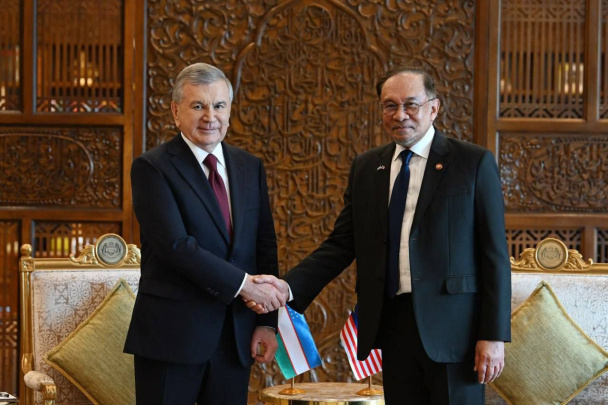According to a report by the Statistics Agency, this growth was driven by a notable rise in exports, which totaled $24.22 billion (+4.4%), and imports, which amounted to $35.14 billion (+3%).
Key trade partners
China remains Uzbekistan’s largest trading partner, with a turnover of $11.25 billion, including $9.34 billion in imports. Russia ranks second, with trade turnover reaching $10.68 billion, including $3.41 billion in exports — a significant increase.
Other key partners include Kazakhstan ($3.85 billion), Turkey ($2.63 billion), and South Korea ($1.8 billion). Trade with these countries has slowed, while trade surpluses were recorded with France, Afghanistan, Kyrgyzstan, and Tajikistan.
Export highlights
While gold remains a key export, Uzbekistan did not export gold in November. For the year, gold exports totaled $6.62 billion, a 18.7% year-on-year decline.
Non-gold industrial goods emerged as a major export category, generating $3.88 billion (+3.6%). Other notable exports include:
-Food Products: $1.97 billion (+19.8%), led by fruits and vegetables ($1.44 billion, +30.9%) and grains ($353.6 million, -20.2%).
-Chemical Products: $1.5 billion (+24.6%), with inorganic chemicals showing a two-thirds increase to $809.2 million.
-Machinery and Equipment: $1.09 billion (-9.1%), including automobiles and components ($374.1 million, -18.2%).
Exports of textiles ($1.83 billion) fell by 3%, while shipments of iron and steel declined by 4.5% to $171.2 million. Energy exports saw growth, with gas exports rising by 16.5% to $593.4 million, electricity increasing to $96.1 million, and petroleum products nearly doubling to over $525 million.
Import trends
Machinery and equipment led imports at $12.15 billion (-8.1%), including:
-Automobiles and components: $2.96 billion (-25.6%)
-Electrical equipment: $1.79 billion (+12.6%)
-Power generators: $996.6 million (+20.1%)
Industrial goods followed with $5.52 billion (-3.5%), as imports of iron and steel increased to $2.44 billion (+5.6%), and imports of nonferrous metals rose by 10.8% to $344.5 million.
Chemical product imports declined by 3.7% to $4.28 billion, although spending on medical goods rose to $1.57 billion (+8%).
Fuel imports surged over 61% to $3.62 billion, driven by a 2.8-fold increase in gas imports from Russia and Turkmenistan ($1.55 billion) and a 30.6% rise in oil and petroleum product imports ($1.8 billion).
Food imports totaled $3.33 billion (+5.6%), with notable spending on sugar and confectionery ($570.4 million, +11.6%) and fruits and vegetables ($343.4 million, +13.7%).






